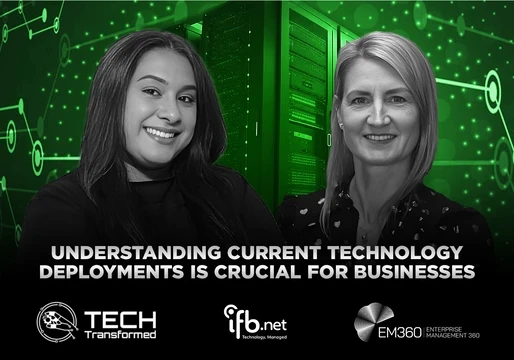We were curious by the recent news announcing that X (formerly Twitter) achieved a 60% cost savings after changing its data storage strategy, focusing on local servers rather than public clouds. This move was not a big surprise, as earlier in November 2022, X's owner and CEO Elon Musk told his staff to find up to $1 billion in annual infrastructure cost savings. To achieve that saving goal, X shut down one data center and decreased the workforce from 8,000 to 2,000, but they had to come up with a more meaningful solution.
Let’s circle back to the mid-2000s. Operation on self-managed data centers was a common approach. X, like many companies at the time, embraced the conventional method of managing data centers. In 2020, X made a pivotal move by leveraging its infrastructure and establishing a multiyear agreement with AWS. This decision set the stage for a notable development in October 2023 when the X engineering team celebrated a remarkable 60% cost savings, attributing the success to the strategic shift towards on-premise solutions instead of relying on public cloud services.
In this article, I want to discuss the pros and cons of shifting to on-premise solutions (an action also known as cloud exit or reverse migration). The trend of cloud repatriation is becoming more discussed among industry experts as companies seek cost savings by transitioning to on-premise solutions. I also have a tip for Musk on how to save even more on data storage, so there’s a lot to cover. Let’s dive in.

Data storage reduction - best practices
5% of organizations currently plan to switch from cloud to on-premises infrastructure, and we’re only seeing the beginning of the trend. A cloud exit strategy is the transition of data, applications, and other digital assets entirely or partly from a cloud service provider. For some market players, this switch could be a game-changer.
Organizations make decisions regarding cloud solutions based on several factors. There is a vast array of cloud options, and there is no one-size-fits-all solution - it depends on your business and what you want to achieve. What better way to decide the course of action for your business than a pros and cons list?
Cloud Solutions Pros
- The comprehensive cloud ecosystem offers a one-stop solution for various IT applications - that’s a significant factor. By connecting to a single marketplace, customers can access advanced applications by various vendors, such as backup software, disaster recovery, and applications (e.g., backup, disaster recovery, AI/ML, etc). Customers benefit from a range of services and applications, simply operating and billing them in one place.
- Long-term contracts are often cost-efficient, providing significant discounts for businesses. For example, AWS offers discounts as usage grows, up to 72% discount when committing to Savings Plans or Reserved Instances for predictable usage.
- The "pay-as-you-go" payment model allows SMBs and startups to decrease the up-front costs for IT infrastructure.
- Companies benefit from using the most updated hardware as maintenance of infrastructure is under the cloud providers.
Cloud Solutions Cons
- Data security and loss of control over entrusted information is among the top reasons to choose on-prem solutions. It provides greater data security than cloud systems, as only users belonging to the organization can access sensitive data and information.
- Data sovereignty laws require certain data types to be stored within specific geographic regions. These laws make it necessary for organizations to have on-premises or hybrid solutions to ensure compliance.
- On-premise offers greater flexibility in usage, such as lower latency, faster response times, and quicker processing speeds. On-premise solutions often provide better performance for certain workloads, especially those that require high computational power or low-latency access to data.
- On-premise solutions bring higher customization adoption if the business operates in a certain niche with more requirements than a standard.
How can you be proactive and save on data storage?
X's shift from public cloud services to on-premise storage proved to be a great success with a significant impact on cost reduction, but it's not the best practice for everyone. The decision of where to plan and revise data storage is a complex question. When deciding on the strategy for your business, it is essential to think upfront about future strategies and decide if cloud repatriation, public cloud, or a hybrid approach is the best solution.
Another recommendation from Gartner's most recent "Cloud Strategy Cookbook" is to develop a cloud strategy (ideally before moving to the cloud) and to update the strategy while continuously keeping a live document record and aligning the cloud strategy with desired business outcomes. Regular revision and validation of infrastructure and comparing business needs vs. costs are also important. As we examine our business regularly, we can see the need for cloud reparation at a certain point in the company’s maturity.
I leave you with one final piece of advice - always explore new alternatives and solutions regarding data. X's cloud exit strategy was very successful. Still, whether the data is located on public cloud providers or on-premise, always keep an eye out for new opportunities to create additional savings, such as saving storage space with data compression technologies.
Mark your calendars for an exhilarating rendezvous on 6th - 7th February 2024, 155 Bishopsgate London! Embark on a captivating journey as we bring together trailblazing data visionaries from diverse industries at CDAO UK.
This extraordinary event promises not only the exchange of wisdom but also the unveiling of ingenious strategies and creative solutions. Don't miss out on this unique opportunity to forge connections that transcend boundaries and ignite your intellect with key themes that encompass.







Comments ( 0 )